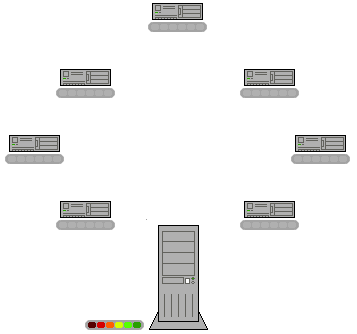 |
| Bram |
Internet protocols and 'systems' are either hit or miss. They last for ages, or only a few months. The web, email, IRC, all things that have lasted, eXeem, Google Wave, hardly any time at all. In the fast paced world of the web, it's often the frantic turnover that kills a new product, especially when it's launched into the middle of a rapidly developing area by a lone developer. BitTorrent has made the grade, as it today celebrates it's 10th birthday.
On July 2, 2001, Bram Cohen released the first version of bittorrent via a yahoo mailing list. While it seemed like a small program, it entered the crowded P2P scene (filled with over a dozen competing - and incompatible) -protocols & networks) and today is by far and away the most popular. It had the file verification, and multi-part downloads of the eDonkey protocol, but the spread centralization of a website.
In fact, the web-site aspect is one that helped it enormously. most p2p networks could only be browsed via the client, which was often clumsy. There were websites that allowed you to search the eDonkey network, and load into it, but it was hard to keep track of which were good, and which were bad, as all search results could be poisoned by just one peer.
The separation of the search and the distribution was one of the two things that helped make it lasting. The other was the individuality of torrents. Each torrent was completely independent of any other, a departure from other P2P systems, which often emphasized sharing as many files as possible. It was completely contrary to what conventional logic said P2P should be, and yet, it worked.
 |
| How BitTorrent works (Source Wikimedia Commons CC-BY-SA) |
Another key decision was to open up the protocol. As well as Bram's BitTorrent client (usually refereed to as 'Mainline', to differentiate the client name from the protocol) users could use clients for a variety of operating systems, or code their own. Again, this was contrary to other protocols, which aimed to keep the client and protocol under wraps, both to monetize, and to try and keep the spam off the network.
All these aspects combined gave Bittorrent users flexibility, with an easy way to deal with spam and other problem torrents. It's also extremely easy to keep the data private - just don't distribute the torrent file, and you can share data without anyone else accessing it.
That's not to say it was perfect, it wasn't, and there have been some tweaks over the years. The first two focused on the tracker, the keeper of the information, and enabler of torrents. The protocol was changed to incorporate a 'Private' flag, at the behest of certain tracker owners. This locked down any method for finding peers except for the tracker, meaning only those who can access the tracker and get peer info can (in theory) get the data. The second was the exact opposite, and made trackers an option, not a requirement. DHT (Distributed Hash Tables) enabled anyone to share torrents, and mean a single link could be used to share the torrent, rather than having to transfer the torrent file itself, via the magic of Magnet Links.
The third came out in late 2009, and was an attempt to make Bittorrent more network friendly. µTP is still gaining acceptance amongst clients, but with Bram's Bittorrent Inc. owned clients (mainline, and µTorrent) being the most popular clients by far outside China, it's got widespread acceptance.
The question to wonder is 'can Bittorrent be improved?' There is little to improve in the flexibility, and efficiency, but many have major issues with the privacy of the torrent. To kill Bittorrent, anything that replaces it will have to deal with that, as well as do everything else, and that's will hopefully not take 10 more years....

Happy Birthday
ReplyDeleteHappy B'day BT! As for the question on can BT be improved? Look no further than Patrick Williams and his uChat app.
ReplyDeletesuck my dukc
ReplyDeleteDick Lickerson
ReplyDelete